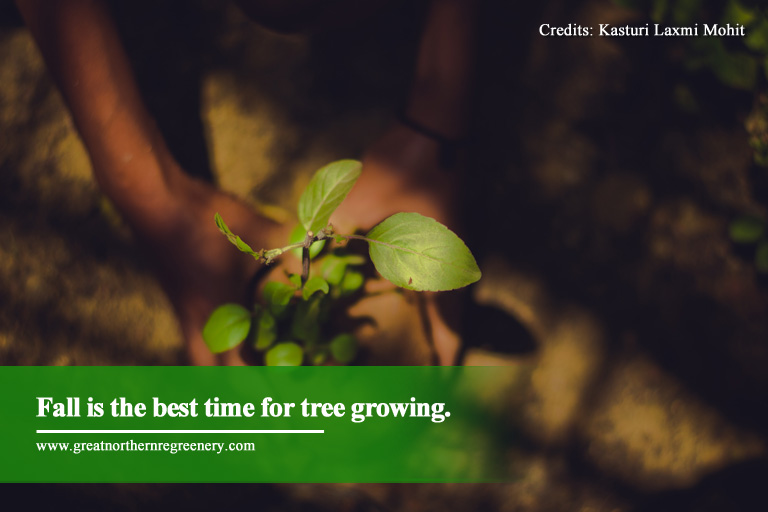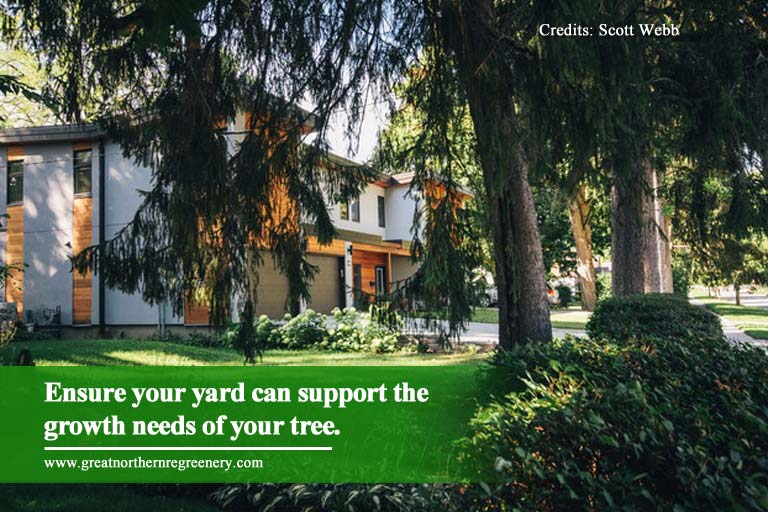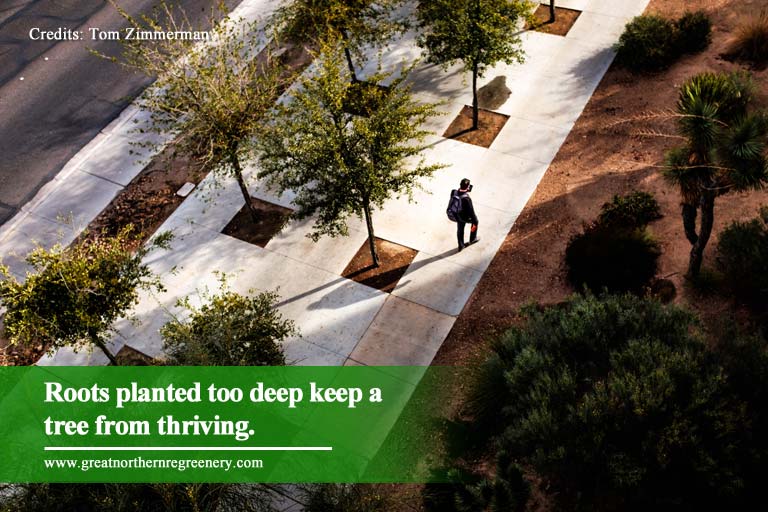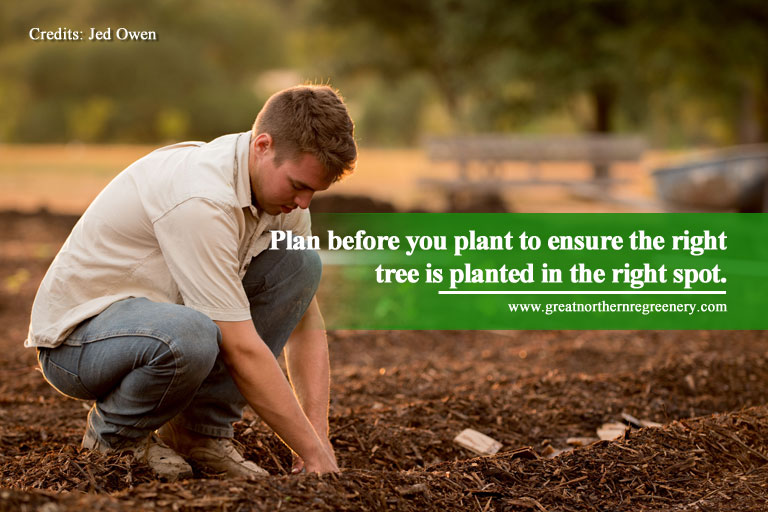Newmarket residents now have the opportunity to protect the environment and earn extra cash while at it.
Under the town’s Local Enhancement and Appreciation Forests’ (LEAF) tree planting rebate program, residents can get a $100 rebate for every tree they plant in their yard. The Town of Newmarket developed the program as a way to thank its residents for supporting the stormwater management program.
Newmarket town mayor John Taylor said that the tree planting initiative is in line with the town’s commitment to combating climate change and lowering Newmarket’s overall greenhouse gas emissions. The LEAF tree planting rebate program also aims to increase the town’s tree canopy, divert about 36,000 litres of runoff stormwater, and filter out pollutants that enter Newmarket’s waterways.
Due to limited supply, rebates are given on a first-come-first-served. Residents can only plant one tree for every property. Fall is the ideal season for planting trees, as the weather is suitable for properly developing root systems. Fall is also conducive to promoting stronger tree growth in time for spring.
Fall is the optimal time to plant trees as the weather allows them to properly develop root systems, promoting a stronger growth period when spring arrives. (Learn more about the LEAF tree planting rebate program here).
If you wish to participate in making Newmarket a greener town, read on for some tips for a successful tree planting.
Basic Tree-Planting Guidelines

Planting a tree is an investment. In addition to absorbing carbon dioxide and providing shade, trees add beauty to any property, reduce cooling costs during the hotter months, and serve as a windbreak to minimize your fuel bills in the winter. You’ll reap full rewards if you take time to plant and care for your correctly right at the start. There are a number of factors you need to consider to ensure proper tree growing.
- Site Evaluation

Prior to choosing your tree, pay attention to your yard and the site where you intend to plant your tree. Evaluate your site based on the following:
-
- Soil type
- Soil acidity or nutrient availability
- Soil compaction
- Space/size
- Amount of light
- Exposure
- Drainage
- Slope
- Hardiness zone
- Choosing The Right Tree
After determining the quality of the soil, choose a tree that will adapt well to your location. When selecting a tree, it’s essential to learn more about the tree’s maintenance needs, growth habit and ultimate size, level of resistance to pests, and its function and potential invasiveness.
For background information on the trees growing in the town, Newmarket is located in the Lake Simcoe watershed, where a combination of coniferous and broadleaf trees (e.g. red oak, white pine, sugar maple, red pine, white ash) thrive. You can check out this list of Newmarket trees for more details.
Avoid choosing a tree according to its native status. Instead, select a tree that is not invasive, doesn’t have pest problems, tolerant to drought conditions, has extended seasonal appeal, and will thrive in your site.
- Preparing The Site

Planting the root ball either too deep or too high is one of the most common mistakes in planting trees. Both can cause problems in the growth of the tree. Digging the hole deeper than the height of the root ball settles the tree, leading to trunk flare and making the structural roots grow too deep. You want to prevent this, as roots that are planted too deep cause the tree to decline and not thrive.
For best results, make sure the depth of the planting hole doesn’t exceed the height of the root ball. Measure where the trunk flare begins down to the bottom of the root ball to get the correct depth of the planting hole.
In some instances, planting holes may not only be dug way too deep but may also be not very wide. To prevent this, loosen the planting area and aerate it three times the diameter of the root ball (three to five times the diameter of the root ball for heavily compacted soil). Wider planting hole must have sloping sides.
- Planting A Tree

Before proceeding to dig, it would be best to locate all your underground utilities to prevent any damage.
- Remove the container. Or it’s a wire basket, cut it away. Check the container tree root balls for circling roots and straighten/remove them.
- Place tree at the proper height. Be careful to dig just the appropriate depth to allow new roots to develop and receive sufficient oxygen.
- Straighten the tree. Make sure the tree in the hole is straightened up in its hole. Prior to backfilling, confirm that the tree is straight by having someone view the tree from different directions.
- Fill the hole. Do this gently and firmly. Fill the base of the root ball with enough soil to stabilize the tree. Then pack soil around the remainder of the hole to get rid of air pockets that can dry out the roots. To eliminate air pockets, water the hole while backfilling it with soil. Do not fertilize the tree at the time of planting.
- Stake the tree (only if necessary). Trees are found to develop sturdier trunk and root systems if they’re not staked during the time of planting.
- Mulch. Spread mulch around the base of the tree to hold moisture, reduce weed, and moderate soil temperatures. Use shredded bark or wood chips and put two to four inches of the matter over the root zone. Avoid piling too mulch against the trunk to keep the young tree from rotting and catching a disease. Leave six inches of bare soil between the mulch and the trunk.
- Give follow-up care. Maintain soil moisture but prevent it from getting water-logged. Water your tree at least once a week and more often during hot and windy weather.
- Avoiding Utilities

Determining where to plant a tree needs serious consideration. When choosing the type of tree you want to plant, remember to look above and below your preferred tree planting spot to identify the direction that your tree will grow to in relation to underground and overhead utility lines.
- Overhead lines – If you wish to plant a tall-growing tree near or under overhead lines, you may need the assistance of your local utility provider in pruning your tree regularly to maintain safe clearance. When overlooked, trees growing into overhead lines can cause service interruptions.
- Underground lines – Know where your underground utilities are located before you plant your tree so you won’t accidentally dig into any lines and risk injuries or service interruption. Also, trees planted near underground lines may have their roots damaged in case you need to dig up your lines for repair. To know exactly where your lines are located, call your utility company. Never proceed to the planting with the assumption that your utility lines are buried deeper than expected.
Following these simple steps for planting your tree should result in a successful planting and help your tree live long and healthy. When you need a comprehensive tree care services or the expertise of a professional arborist in Newmarket, contact Great Northern Regreenery.
For inquiries, call us at (905) 775-7444 or fill out this form to schedule a FREE inspection and assessment before planting your tree.





